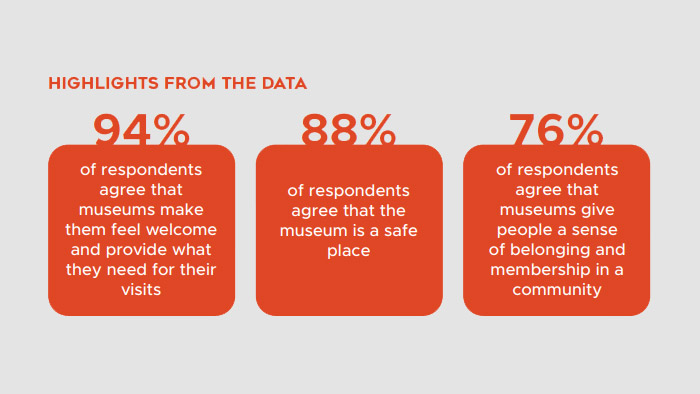In the fall of 2020, the Alberta Museums Association launched the largest research project on Canadian museums and their stakeholders since 1973. The following is a summary of some of their findings:
At a time of increased urgency around discussions about social change and with lives disrupted by the Covid-19 pandemic, the Alberta Museums Association (AMA) wanted to examine the role of Canada’s museums in an uncertain future. The AMA consulted with more than 3,000 Canadians to find out what people think about the museums of today and how they serve (or don’t serve) their communities, what museums could become in the future, and how to turn that vision into reality. “Reconsidering Museums” is the first time since 1973 that a national study gathered data on the Canadian public’s perceptions and attitudes towards museums.
Museums are seen as a place to learn and be inspired, to preserve and care for art and objects, to help tourists and visitors explore a region or place, and to help people understand other cultures and communities. While most people, including youth, say museums make them feel welcome and reflect their interests and needs, there was general agreement that more should be done to help people understand today’s world and address a variety of social and economic issues, such as inclusion and accessibility, technological and digital advancement, and Indigenous reconciliation. More than three-quarters of people say museums should help people understand and accommodate people from other regions and cultures, but a significant minority, particularly younger Canadians, feel museums are too Euro-centric in their approach.
Several people told us that today’s museums are perceived to cater to mostly middle-class, educated people and need to become less “stuffy” to appeal to a larger demographic. They want museums of tomorrow to continue to serve their community, be flexible in adapting to changing situations and requirements, and provide digestible information that laypeople can relate to and understand.
As the executive director at Mennonite Heritage Village (MHV), I’m so thankful that AMA has done this in-depth research. Museums are not static but are some of the most dynamic and complex places on earth. Where else can you go for a minimal fee and with your five senses (including tasting traditional food) learn and ponder what your heart is drawn to? I love seeing children running with excitement to whatever building attracts them, or see a youth move in for a closer view of a certain exhibit panel and read every single word, or a senior who lingers at a farm implement remembering how it was to be young and working on the farm. That said, we will continue to work to make MHV a place for all to enjoy and benefit from.




